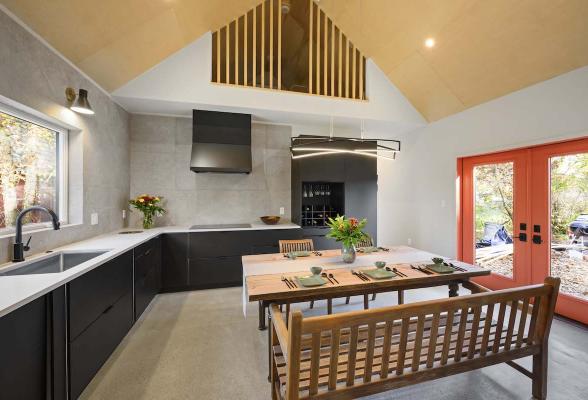The Psychology of a Remodel: Helping Homeowners Ease Stress
Home renovations are ripe for a mental meltdown, especially if your client is living in the construction zone.
Relationships are tested, and psychologists have dedicated books and articles to help couples survive the process. Some of the stress of remodeling can be avoided with careful planning, realistic expectations, and the luxury of time and money. However, even in the best-laid plans, there will be days filled with storm clouds.
As an experienced remodeler who has also undergone her own remodels, I offer this advice for easing renovation friction:
Minimize the Mess
There are many steps builders can take to improve indoor air quality and reduce the appearance of a chaotic job site, which in turn, will help support the physical and emotional well-being of occupants.
First and foremost, keep the work area neat and tidy.
Create temporary barriers that wall off the occupied space from the construction zone. Use air scrubbers inside and outside the construction zone to remove airborne dust and debris.
My favorite product for filtering dust particles out of the air is the WEN 3410 3-Speed Remote-Controlled Air Filtration System (and it’s just $134). It includes a replaceable filter and pre-filter, plus it can run on a timer.
For removing toxic fumes, I use the XPOWER X-2580 Professional 4-Stage HEPA Mini Air Scrubber. It offers a commercial-grade motor with four-stage filtration and produces up to 550 CFM.
If possible, designate one rear or side entrance for all construction activity, and refresh doormats regularly.
Be Empathetic and Manage Expectations
As builders, we are not trained psychologists, but we can offer an empathetic ear to our homeowners, provide advice on weathering the storm, and reassure them that the end justifies the means.
A remodeling project destabilizes a fundamental human need for shelter, which suddenly feels subsumed in chaos and uncertainty, a never-ending to-do list with an escalating price tag.
According to psychologist Jennifer Kunst, Ph.D., adapting to change can be the most difficult expectation to manage.
“Often, we forget that we are dynamic creatures in a dynamic system that has built-in tensions and challenges. Instead, we expect life to go smoothly and are shocked when problems arise,” she writes. “But the real problem here is not that the problems arise. The real problem is that we don't expect them to.”
Always be upfront with clients about the anticipated challenges and the unknowns. I often have to explain to homeowners that we ‘can’t see behind the walls,’ what implications that might have on their project, and that I can’t guarantee 100% smooth sailing.
I suggest beginning these communications by acknowledging the challenge, providing the client a space to vent, and capping it off with encouragement.
Communicate Weekly
I recommend scheduling a weekly project management (PM) meeting with homeowners to review the timeline, budget, change orders, and selections.
Remember to keep it short. These meetings can get bogged down in the details, but time is a very precious and limited commodity on a busy job site. Move through your agenda items quickly and decisively (I usually cut things off at 60 to 90 minutes). If the client is undecided about a selection, set a prompt deadline for their "homework" and move on.
Weekly meetings are a critical part of our client communication strategy. We take notes that are shared with the team to keep everybody on the same page. We also use the PM meeting as a time to recognize what has been accomplished thus far.
Bring all hands on deck for these meetings and walk the site, if feasible. Meeting attendees may vary according to the agenda, but typically, you want participation from the site superintendent, project manager, interior designer, and architect, along with your homeowners.
Engaging homeowners as collaborators in project management discussions can help them understand that there is a methodology underlying the process and a rationale for your decision-making.







